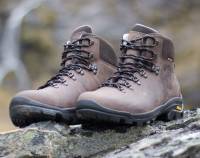This is an old revision of the document!
Table of Contents
Sota Personal Equipment:
SOTA (Summits on the Air), POTA (Parks on the Air) and HEMA (Humps Excluding Marilyns Award) are radio but in the Great Outdoors as they say. See below information regarding the person equipment not radio related to have a fun but safe journey into the great outdoors.
Boots
There are many different types of boots on the market they can range in price for £40.00 all the way to the hundreds of pounds. To enjoy the great outdoors you don’t need the super high end unless you are going up something like K2 (which in sota in the uk is very unlikely to get anything like that), however bear in mind that if you are on the hills everyday you might need to invest more money to get a longer lasting boots. For the every couple of weekend walkers the low to mid range price around £100.00 will be fine.
Sizing boots is more important than people think, don't get the size you normally are as most people are a size bigger than they normally are. There are two reasons for this one: you will be wearing bigger socks so they take up more room and you don’t want your feet rubbing. Secondly when you walk for long hours and distances your feet expand and this creates problems if your boots are too small your feet will curl up and be damaged. Lastly when you feel for a boots fit easy tip is that the boots should be secure round the ankle and have wiggle room in the toes.
Taking care of boots this is very important to keep boots waterproof. However please bear in mind that boots are not designed for standing water they are designed to keep water out running over them. So don’t stand in water for long periods of time as they will leak, if you need that wellies are the way to go however they are not correct shoes for going up hills as you can break an ankle with them. The best and cheapest advice to keep boots waterproof is to keep them clean. The cleaner you keep them the longer the waterproofing on the boots from the manufacturer will last. After this has been worn away (for an average walker this is about a year). Then you should apply a reproofer, but if the boots are still waterproof do not apply a reproofer as the new layer will attack the old layer.
Socks
There are many sock brands very similar to each other. However there are different types of socks you can wear out and about. First type is a general walking sock this is usually a medium high sock which is sung round the foot but with a bit more padding in the ankle and toe area. The second type is a liner sock this is a thin sock which is used in very hot summers and as sock to help with blistering. Lastly there is an anti blister sock this is like a walking sock however instead of using a liner sock it has a mesh on the inside this is what makes them anti blister as the mesh and sock rub together instead of your feet and the sock. This same effect can be achieved by putting a liner sock under a walking sock. Lastly please change into a new pair of socks when driving back from the hills. This will allow your feet to breath and recover from a long walk sooner.
Base Layers
There are a couple types of base layers. The first being thermal base layers. This is normally thin wool which will go between your skin and t-shirt and you can also get trousers as well. This type is normally for colder climates and do bear this in mind before buying these as depending what season you walk you might not need them at all. This second type of base layer is normally thin fleece, these are also normally called micro fleece. These are normally between t-shirt and your main fleece or between your waterproof jacket depending on weather. These items are very weather dependent however be warned that you might want to take them in a backpack just in case due to the fact the weather at height can be very different to the car park and you may need them. Please check the mountain forecast to help with this decision.
Fleece
Fleece are an important part of any day out as they provide multi purposes when you have them on. One of them is to be a thick outer layer when it is not raining. This helps by reducing the effect of wind chill and gives you an air layer between the fleece and under layer which keeps you warm. However when raining in cold temperatures, the fleece becomes an inside layer which means you might not need the thickes but it will create air layers between the waterproof and the fleece and also between the fleece and under layer. So when going up the hills bear in mind that the temperature is normally lower than at the car park and layers will be needed and can be sorted in a rucksack to put on and take off as needed.

